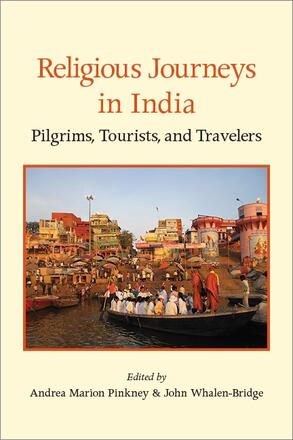
Religious Journeys in India
Pilgrims, Tourists, and Travelers
Alternative formats available from:
Explores how religious travel in India is transforming religious identities and self-constructions.
Description
In an increasingly global world where convenient modes of travel have opened the door to international and intraregional tourism and brought together people from different religious and ethnic communities, religious journeying in India has become the site of evolving and often paradoxical forms of self-construction. Through ethnographic reflections, the contributors to this volume explore religious and nonreligious motivations for religious travel in India and show how pilgrimages, missionary travel, the exportation of cultural art forms, and leisure travel among coreligionists are transforming not only religious but also regional, national, transnational, and personal identities. The volume engages with central themes in South Asian studies such as gender, exile, and spirituality; a variety of religions, including Sikhism, Islam, Buddhism, and Christianity; and understudied regions and emerging places of pilgrimage such as Manipur and Maharashtra.
Andrea Marion Pinkney is Associate Professor of South Asian Religions at McGill University. John Whalen-Bridge is Associate Professor of English at the National University of Singapore. He is the coeditor (with Gary Storhoff) of many books, including The Emergence of Buddhist American Literature; American Buddhism as a Way of Life; Writing as Enlightenment: Buddhist American Literature into the Twenty-first Century; and Buddhism and American Cinema, all published by SUNY Press. He is also the author of Tibet on Fire: Buddhism, Protest, and the Rhetoric of Self-Immolation.
Reviews
"The strengths of this book are its broad cross-cultural and interdisciplinary purview, its theoretical sophistication, its questioning of conventional understandings of pilgrimage, and a credible index … Religious Journeys in India is recommended for both undergraduate and graduate courses in religious pilgrimage, religious tourism, theories of religion, and transnational flows of spiritual traditions. " — Nova Religio
"Given the breadth of theme, chapters from this book will be of interest to a wide variety of scholars of South Asia. " — Reading Religion
"It's rare to find such diverse accounts of religious travel collected in a single volume, where scholars' engagements with individual places of pilgrimage in India and with the journeys surrounding them are truly in conversation with one another. For readers, it makes for a deeply enlightening journey. It also raises an interesting question: Is the reality of India powerful enough that it absorbs divergent expressions of religious tourism, making of them a common fabric? Here, so unusually, readers have the materials to decide. " — John Stratton Hawley, author of A Storm of Songs: India and the Idea of the Bhakti Movement